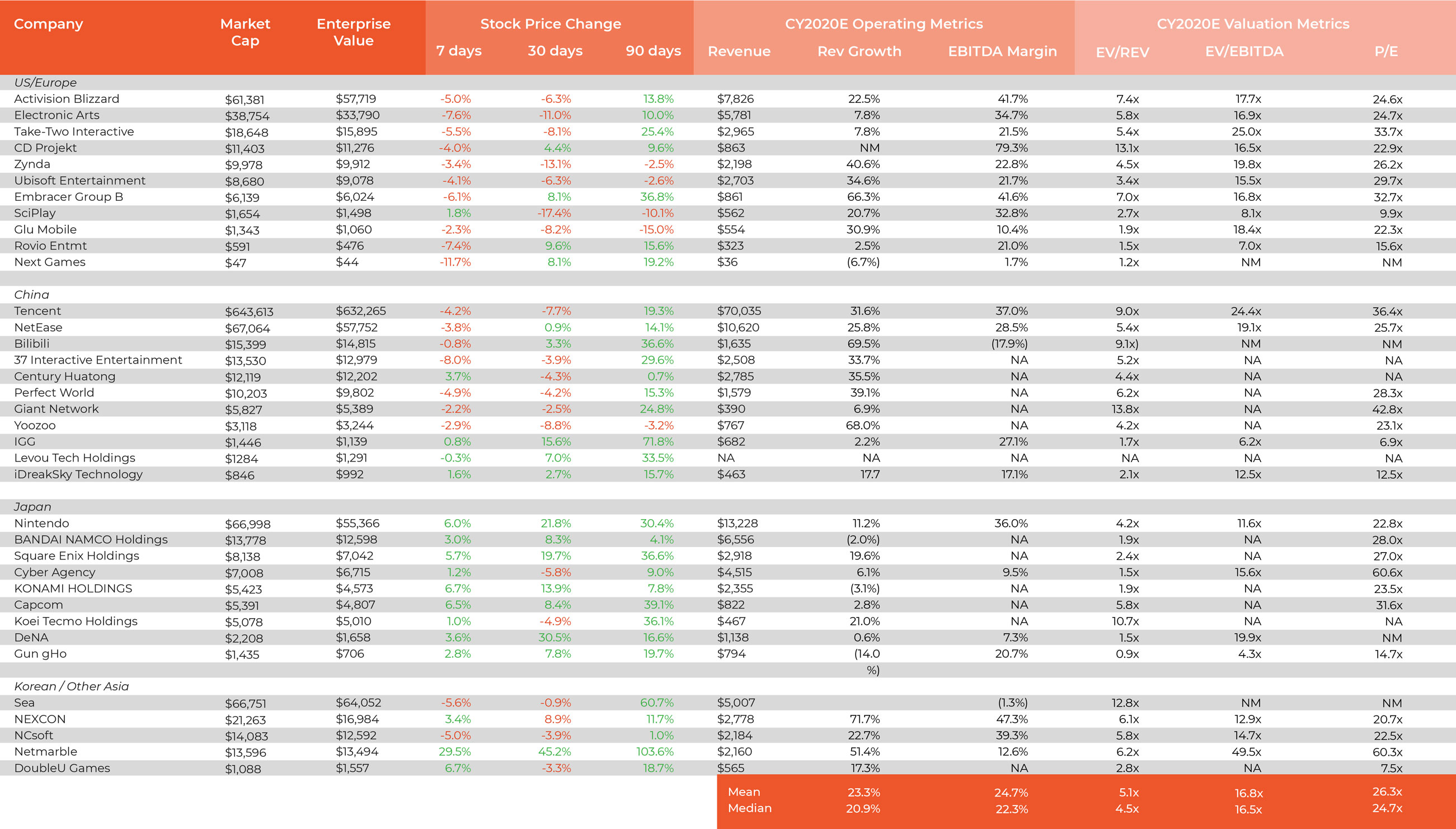GAMES AND CULTURE
What started in the early 1970s as a way to bounce an electronic ball between two paddles on your home television screen has morphed into a massive industry that is influencing and shaping culture and business on a global scale. The $160 billion video game industry is the melding of physical and digital worlds that is literally pulling everything from education, music, movies, TV, sports, medicine, national defense, construction and politics into the future. In fact, while the video games themselves remain a central part of the industry, the reverberation these games have on the world produces an outsized impact far greater than revenue alone.
BIG AND GETTING BIGGER
In 2020 we have seen three gaming companies reach incredible
milestones:
 Roblox raised $150 million and was valued at $4 billion. In July, Roblox users spent a collective 3 billion hours on the platform, up 100% from earlier this year.
Roblox raised $150 million and was valued at $4 billion. In July, Roblox users spent a collective 3 billion hours on the platform, up 100% from earlier this year. Epic Games raised $1.78 billion at a valuation of $17.3 billion and unveiled its next-gen game engine Unreal Engine 5 that melted just about everyone’s mind.
Epic Games raised $1.78 billion at a valuation of $17.3 billion and unveiled its next-gen game engine Unreal Engine 5 that melted just about everyone’s mind.
 Epic’s competitor, Unity raised $1.3B in an IPO that valued the company at $13.7B after raising $525 million at a $6.3 billion valuation last July.
Epic’s competitor, Unity raised $1.3B in an IPO that valued the company at $13.7B after raising $525 million at a $6.3 billion valuation last July.In 2020 2.7 billion gamers—32% of the world’s population—will spend $160 million on games, a number expected to exceed $200 billion by 2023. By comparison, the global box office industry is worth $41.7 billion while global music revenues reached $20.2 billion in 2019. Gaming is the largest and fastest-growing segment of the entire entertainment industry. Gamers spend an
average of six hours, 20 minutes each week playing games, with those aged 26-35 spending the most time playing at seven and a half hours a week. However large all of this is, people still spend over three hours per day watching TV, or 23 hours per week, meaning there is much mindshare that can be taken by video games—which is almost assuredly why Netflix feels Fortnite is a bigger competitive threat than HBO.
All of this news has made its way to the public markets, where gaming companies are up on average almost 100% this year. However, gaming companies have a mean P/E ratio of 25 compared to the S&P 500’s mean of 30 (and that’s after the six-month run-up since March). Given the many reasons gaming is poised to continue its takeover of the entertainment industry, it feels as if the gaming industry may be highly undervalued.
And what some may not appreciate is that we may be coming up on the end of the beginning of the gaming industry, and that the next ten to twenty years will see gaming culture and technology having an even larger impact on how we live and
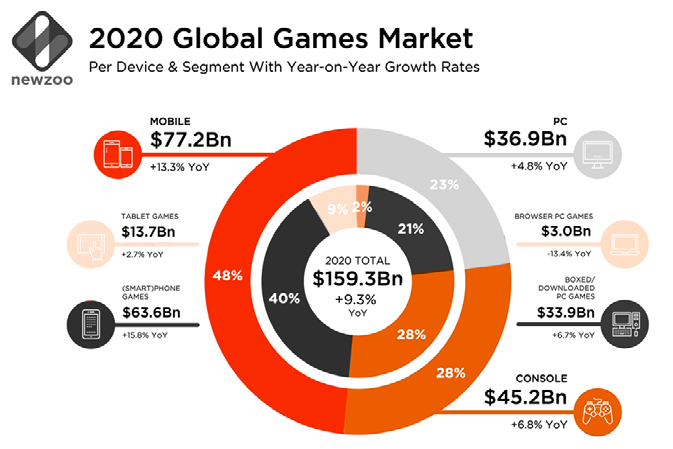
work. Later this year, Microsoft and Sony will release the 9th generation of video game consoles, the Xbox Series X and PlayStation 5 respectively.
While these may not be the last hardware consoles to be developed and released, many feel that the 10th generation of gaming will be cloud based or something more virtual. As we move away from individual consoles to the cloud where all game logic, physics, image rendering and remote processing can be handled by servers with ridiculous computational power, the very nature of what a video game is will change. Additionally, through these advancements, the ways in which gaming and gaming technology can shape other industries will multiply.
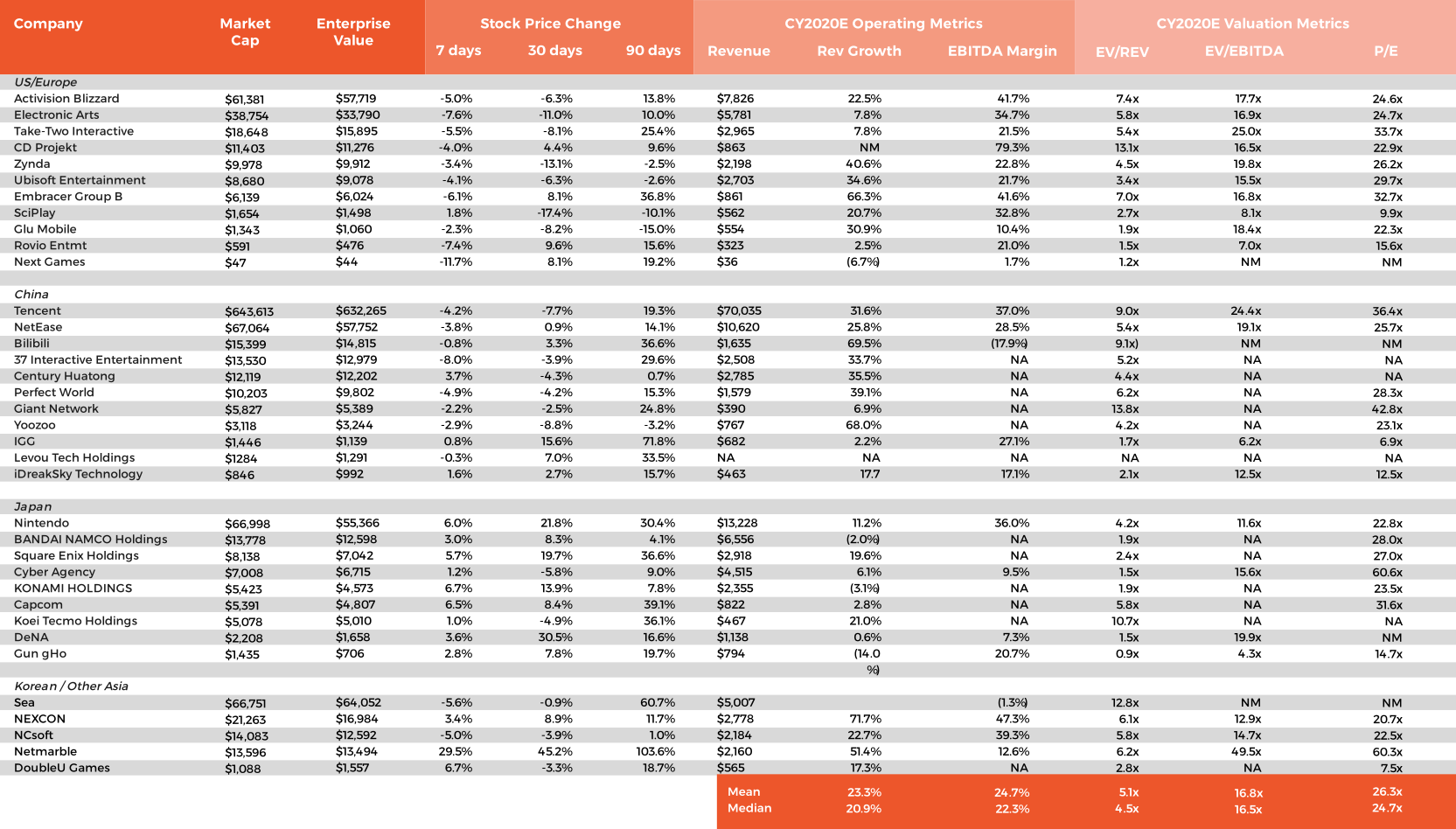
WHY IS THIS HAPPENING NOW?
Five decades into the gaming revolution, three decades into the rise of the modern Internet, two decades into the mass adoption of the smartphone, and standing at the dawn of the 5G era that will bring gigabit-per-second speeds to our mobile devices and headsets, all of the technology required for gaming cultural takeover is nearly in place and ready to deploy at scale around the world.
In August, Nvidia unveiled their latest graphics chip, the GeForce RTX 3080 that has 28 billion transistors. The original NES contained a grand total of 3,218 transistors. The upcoming Microsoft Xbox Series X will have a AMD Zen 2 processor boasting 15.4 billion transistors. Even the iPhone X’s A11 Bionic chip contains 4.3 billion transistors. This massive increase in computing power along with improvements in machine learning models fueled by larger and larger data sets and platforms like TensorFlow allow for exponentially more complex and expansive games without sacrificing speed or quality.
Mobile phone and home broadband penetration is becoming nearly ubiquitous in the developed world with 73% mobile phone penetration in the US and 61% penetration globally, and
94% broadband internet penetration in the US and 62% penetration
globally. The average broadband internet speed in the US is 50.2 Mbps
with some cities averaging above 100 Mbps. 4G speeds average at 5 Mbps
and can go as high as 50 Mbs. Two of the world’s largest gaming markets
have high 4G penetration: South Korea has the highest global penetration
at 97.5% with the US placing 5th at 93%. As speeds progress up to multi-gigabit
levels, game latency for even the fastest moving games will fall to
levels not perceivable by human eyes.
The devices by which we experience and interact with games are evolving
as well. Bigger and bigger TV sets and computer monitors aside, we have also seen
best-selling devices like the Nintendo Switch bring AAA gaming to the mobile
consumer. Apple’s 2020 iPhones will most likely be 5G enabled and have a
120Hz “ProMotion” refresh rate making that next Call of Duty: Mobile
session all the clearer. As more VR and AR gaming options come to market
(including Apple’s forthcoming AR glasses), gamers
will find new ways to fully immerse themselves into the gaming
environment, enhanced even further by haptics and other audiovisual
sensor devices. Cross-platform
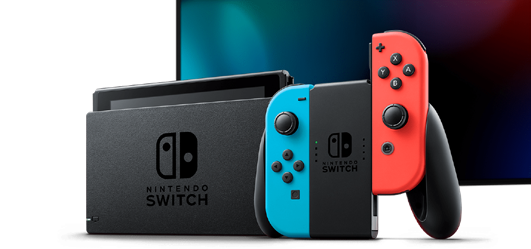 Source:Nintendo
Source:Nintendo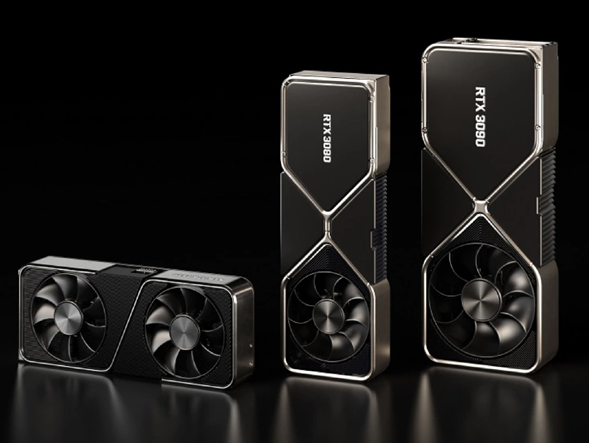 Source: VentureBeat
Source: VentureBeat
gaming will enable players to start a game on their mobile device, pick it up on
their PC and complete a mission virtually inside a VR environment.
In the same way that AWS has lowered the barriers to entry for entrepreneurs wanting
to launch a startup, game engines such as the Unreal Engine and
Unity have
democratized the ability to develop a game. These game engines can manage many of
the complexities of game development, including in-game physics and rendering
optimization so that game devs can focus on art, story, gameplay, community and
other more creative and strategic aspects of game creation. Taken even further,
products like CORE from Manticore Games are no-code platforms where even
the most novice game developer can create a robust AAA game. Dev teams can be
smaller and operate independently outside of a larger publisher. And there are other off-the-shel solutions including whole ecosystems, with
marketplaces, economies, developer communities, plug-ins, and modules that allow
devs to bring games to market faster and cheaper than ever before. Additionally, and
not without controversy,
app stores from Google and Apple have made reaching an audience of millions
significantly easier. And the easier it becomes to make and distribute a game, the
more diversity we’ll see in the developer community and the games that community
creates.
We are living in unique cultural times. We seem to be at record levels of economic
and political polarization the world over. COVID-19 has amplified the demand for
virtual entertainment and interactivity. More optimistically, we have several
generations of people who have now grown up with video games, and at least one
generation who has come of age with ubiquitous virtual worlds, identities and
assets. Sandbox games like Minecraft and Robolox have birthed a generation of
virtual-world makers who seek identity and friendship inside of these worlds as much
as they do the physical one. While far from perfect, games possess the ability to
bring us together and help bridge the divides that exist between us.
 Source: The
Source: TheVerge
Music
One truly must be living under a rock to not know about Travis Scott’s
Astronomical virtual show in Fortnite, which set a record for the
largest live performance of all time (not counting those attached to a sporting
event) with 12.3
million concurrent participants and over 27.7
million unique players in-game participating live 45.8 million times across
the five events, and grossing an
estimated $12.5 million. This was a culture-shifting moment that was
preceded by equally interesting virtual performances. DJ Marshmello held the
first-ever live performance inside of Fortnite in February 2019 that had
10.7 million concurrent participants. Other live performances happening in
game-like environments include the Wave shows
from Lindsey Sterling,
John Legend and The Weeknd
among others. Most recently, Epic
announced that they want Party Royale Island in Fortnite to be a tour stop
for major artists, and are kicking this off with a new, threeweek-long
concert series. And a
K-pop single by a group composed entirely of video game characters is No. 1
on the Billboard charts for the second time.
FASHION
What was also interesting about the Travis Scott Astronomical Fortnite performance was that he was wearing his Travis Scott Nike Air Force. It was a prominent promotion of the famous shoe that did not go unnoticed. About a year prior, Brand
Jordan partnered with Epic to deliver branded Jordan content into Fortnite. Beyond in-game fashion collaborations, gaming influencers and professional organizations have partnered with major brands to merge the worlds of fashion and gaming. Louis Vuitton launched a League
of Legends collection a ahead of the 2019 Worlds tournament, and the
famous Fortnite streamer Ninja became the first pro gamer to get his own shoe
line when he
launched a low-top sneaker with Adidas. FaZe Clan, a MaC VC portfolio
company and one of the industry’s biggest professional organizations has
continued to break ground with collaborations with Champion,Manchester City Football Club and Juice
WRLD among many others. Some have even speculated that eSports apparel
could overtake traditional sports merchandise sales.
RETAIL
Beyond games as an ideal spot to launch new fashion concepts, physical retailers
are also getting in on the gaming action. Simon Property Group, the largest mall
operator in the US announced
last year it was investing $5 million in the entertainment company
Allied Esports to create lounges for competitive video game events at Simon’s
malls. The second most valuable publicly-traded gaming company after Tencent, Sea
Limited launched an ecommerce platform Shopee in 2015. The site
is now known as the Amazon of Southeast Asia and it did $6.2
billion in GMV in Q2 2020. That would be like Riot in the US launching a
true Amazon competitor. Pretty remarkable.
TRADITIONAL FILM & TELEVISION
Traditional film and television have benefited vastly from gaming, and quietly
the film and TV industries are slowly transforming into a business that more
resembles the gaming industry than the Tinsel Town of old. At the most basic
level, when done right, gaming
IP can make for great filmed content (see Paramount’s Sonic the Hedgehog
or Netflix’s The
Witcher). Games can also be a great place to promote a film. JJ
Abrams premiered an exclusive clip of his Star Wars film inside of
Fortnite, and the game offered lightsabers and other Star Wars merch
in-game. Fortnite
also introduced John Wick mode that adapted themes and items from the
John Wick films into the game. In June, Fortnite
announced Movie Night where gamers could watch limited screenings of one
of three different Christopher Nolan films, Inception, Batman Begins, or The
Prestige directly in Fortnite.
CONTENT + CONTENT CREATION
More interesting though is the way the movie-making process has been altered by
gaming technology. The Disney+ smash series, The Mandalorian employed
Epic’s Unreal Engine to create a virtual production workflow that could
change and control set backgrounds in real-time. Disney’s The Lion King feature
film was shot entirely
inside of a VR world where the creative team could alter the whole
landscape and the characters in it virtually in real time. Special effects
professionals are now able to create incredible and 100%
realistic real-time VFX using the Unreal Engine, saving them massive
amounts of time and money. And evolving even further, startups like Pladeo in the UK are creating a “new
grammar for television” by completely re-thinking the content creation
process and television formats. Their series Avo is the perfect
marriage between a traditional scripted web series and a mobile game.
GAME DEVELOPMENT
Even game development itself has been altered in a very meta way by gaming
technology. Roblox
recently announced it would be paying out $250 million to developers in
2020 alone who have created games and experiences inside of Roblox. And some of
these games are
becoming more popular than even traditional AAA games. Others like Toya are targeting
specific female audiences. An army of young budding game developers are
now making
a living developing games inside a game.
TRADITIONAL SPORTS
Traditional stick and ball sports have also been swept up in this trend. For
decades, some of the biggest gaming titles were those built a round traditional
sports: Madden NFL, FIFA Soccer, NBA Live, Wii Sports and NBA 2K are some of the
best-selling franchises of all time. But what is even more compelling is how
gaming is transforming the way in which younger audiences interact with
traditional sports. Livestreaming
platform Caffeine has begun to broadcast the X Games allowing for any
Caffeine user to act as their own commentator broadcasting their own customized
and personalized version of the competition to their legion of fans. And soon
you may even be able to watch live NFL football games inside of Minecraft being
played out in Minecraft stylized stadiums and with Minecraft stylized players.
eSPORTS
Moving beyond traditional sports, eSports have blossomed into a vibrant
ecosystem projected to hit $1.1 billion in revenue in 2020. Globally,
the total esports audience will grow to 495 million people in 2020, a
year-on-year growth of 11.7%. And live eSports championship matches are seeing
upwards of
over 1 million concurrent viewers. While that might not yet stand up to
the average NBA finals game or the Super Bowl, it does beat the average MLB game
which averaged 925 thousand viewers in 2019. And while we may not see
eSport-themed Starbucks in the US in the immediate future, Tim
Hortons, the Canadian-based coffee and doughnut chain, is expanding to some
1,500 outlets across China with a focus on esports themed services, so
maybe we’ll see it sooner than we think.
OTHER LEISURE ACTIVITIES
Everything else from social
networks to theme parks
to
traditional board games to even
chess are being disrupted by the gaming industry in ways that have just
begun to take hold.
HEALTH + MEDICINE
But it’s not just leisure businesses that are being transformed by gaming. In June, the FDA approved the first prescription video game for kids with ADHD, and a new survey suggests that playing games may actually improve kids’ literacy, communication skills and overall mental well-being. Credible medical journals have begun to report how playing video games can have positive health outcomes. Video games are even changing the way medicine is taught.
EDUCATION
Virtual educational courses on how to become a game developer have sprung up, and Stanford University has begun to study how using games as an educational tool provides opportunities for deeper learning. Amazingly, UK design company Blockworks created The Uncensored Library, a virtual hub built completely in Minecraft housing a collection of otherwise inaccessible journalism from all over the world. And during the pandemic, not to be deterred by shelter-in-place, graduating students held an entire graduation ceremony inside of Minecraft.
CONSTRUCTION + NATIONAL DEFENSE
The construction industry is also getting in on the action by building virtual construction sites using the Unreal Engine to bring high-quality, interactive visuals to life—letting clients experience what their buildings or facilities will look like, examining different layers for electrical, plumbing, and other systems, before they even break ground. The US military is even using games to not just recruit and train soldiers and enact war games, but to also deal with PTSD when those soldiers return from the real field of battle.
WHERE OPPORTUNITIES LIE
At MaC, we are looking for opportunities that push
culture forward. Opportunities that close gaps vs widen them. Companies
building the diverse and representative future we wish to see. In the gaming
space, we are looking for companies blurring the line between gaming and
everything else. These types of opportunities can take many forms, but we
feel they will take a few specific shapes.
GAME CREATORS
Without games there is no gaming industry, and we feel
the creation of unique, engaging and attention-grabbing IP will continue to
serve as a pillar of this industry. Modding and
genre tweaks have given rise to some of the most successful game titles of
all time. The mod of Blizzard’s Warcraft III led to Dota which gave rise to
Dota 2 and League of Legends. ARMA2, an open world, military simulation game
was modded into what ultimately became the battle royale game
PlayerUnknown’s Battlegrounds, whose massive popularity influenced Epic to
adopt a battle royale sub-genre to their new game Fortnite, which gained
over 10 million players during its first two weeks of release. Zynga’s
Farmville successfully leveraged Facebook’s social network to drive viral
user acquisition. Playrix brought
a new approach to the saturated hyper-casual match 3 puzzle game
category to create the huge mobile hits Homescapes and Gardenscapes. We are looking for gaming companies that are opening the gaming world to more diverse genres, narratives and experiences. We’ve invested in Artie that is making AR-enabled browserbased games, and Mighty Bear Games that brings a family-friendly, casual approach to the battle royale sub-genre via their hit game Butter Royale. These developers and others will not just create new categories, genres and sub-genre of games, but also expand what is even possible in a video game.
 Source: The Verge
Source: The VergeDIVERSITY IN GAMING
We have concerns about the lack of diversity in this industry, and put a premium on game studios that place an emphasis on diversity and inclusion. Several studies support the narrative that black populations have a higher concentration of gamers, and that people of color play longer on average than white gamers. Quartz has noted that 57% of video game players in the U.S. between the ages of 6 and 29 will be people of color in less than 10 years, and already people of color under 18 outnumber whites in the US. 40% of total gamers are women and 49% of mobile gamers are women. Despite these facts, women and people of color are drastically underrepresented in games. And as noted
earlier, that lack of representation is also seen in the industry’s executive
ranks. If Marvel’s Black Panther has shown us anything it is that communities of
color have a strong desire to see themselves authentically portrayed as heroes
in mediums they love. Making games that are inclusive on and off screen makes
too much sense to us. Not only can it capture more attention and dollars from an
increasingly large portion of the population, but it also delivers on much
needed social change.
We previously invested in Aconite, a game studio led by Nadya Lev and Star St. Germain who will be releasing their first mobile title HoloVista later this year. And we have gotten to know several other diverse studios including Brass Lion Entertainment, Big Wolf Games, Dorian, Glow Up Games, DONTNOD Entertainment and Robin Games, but there are not enough like-minded companies out there. We know there are amazing developers from underrepresented communities in gaming gearing up to launch their companies and that excites us.
 Source:HoloVista
Source:HoloVistaNEW CONTENT AND CREATION METHODS
Another area of focus is around studios, platforms and technologies
that improve the way traditional content is made and distributed as
well as enable new forms of entertainment. While we have seen
advancements in visual effects in film and television content, for
the most part, these mediums have not seen dramatic technological
change since inception. The biggest disruptions in this space have
been more around the distribution of content. However, we are now
seeing content studios leverage gaming technology to drive
efficiency and cost savings in production and vastly expand what is
physically possible. As mentioned in the previous section, Disney’s
The Mandelorian leveraged Epic’s Unreal Engine to create many of
their cinematic backdrops (for
which they won an Emmy), and The Lion King was shot entirely
in VR leveraging the Unity game engine. Undoubtedly we will see many
more worlds come to life on the big and small screens via emerging
game technology.
CONTENT DISTRIBUTION + ENGAGEMENT
We have also noted how films and TV shows are now being screened
inside of games like Fortnite, and how platforms like Twitch,
Youtube and Facebook Messenger are changing the way traditional
content is consumed, making it more
interactive and participatory while increasing global reach.
Our portfolio company Caffeine has taken the
massively popular, but massively offline Ultimate Rap League community and
brought it online and
given it wings to spread virally around the world to reach new
audiences. As Hollywood looks to increase the reach and monetization
of its content it will increasingly look to the gaming world for
solutions.
NEW FORMATS OF CONTENT
We are just now seeing what kind of new content formats can be
created by marrying traditional game design and play with more
traditional content creation methods. We have invested in Within who has a wonderful
interactive narrative division for kids called Wonderscope where kids can
“play” an AR story on an iPad or smartphone. Playdeo and Unrd are merging gaming with
filmed narrative content, and Solve HQ is building interactive true
crime and mystery experiences. Telltale
Games made what were essentially playable movies. Taking a
gaming/interactive mentality to filmed narrative content unlocks an
entirely new mode of storytelling that artists have just begun to
explore. With a few generations of people who have grown up with
games and the internet, and who have expectations of agency in the
content they consume, we feel there is a sizable opportunity to
expand the very nature of film and television. The billiondollar
film franchises of the future will be larger in scope, and much more
participatory than the passive ones of today.
WIDENING ACCESS TO GAME CREATION
Companies that widen access to game creation in the ways that the Unreal and Epic game engines, the Google Game Builder, and sandbox platforms like Roblox and Minecraft have done are entirely appealing. We have made one such investment into Manticore Games whose CORE platform gives anyone the ability to create AAA games. These low or no-code platforms democratize game creation ability, and expand the community of game developers. And with that expansion comes developers from different backgrounds and experiences creating new types of games and game-related experiences. In the same way that Youtube, Instagram, Tik Tok and others launched an entire new class of content creators, these game platforms will give rise to a billion-dollar ecosystem of novice developers making a living through game creation.

 Source: Wonderscope, Manticore
Source: Wonderscope, ManticoreSYNTHETIC REALITY
We are also looking for companies who will enhance how we learn,
heal ourselves and protect ourselves in ways that leverage the
underlying fundamentals of gaming. We explored above how gaming is
enhancing the fields of education, medicine, construction and
national defense and we expect that to grow exponentially. These
changes will drive the merging of the physical and digital worlds
into what BITKRAFT calls a new synthetic reality,
unlocking enormous amounts of value.
THE METAVERSE
Finally, we are looking for companies whose bold visions involve
creating new virtual worlds. Worlds where we will not just play
games, but where we will socialize with friends, shop, learn, earn a
living, perform, transform, travel and escape. In short, we are
looking for companies that are building the future metaverse. Epic’s
founder, Tim Sweeney has
said that he is looking to “create a metaverse, a place
where all IP can live together, where all kinds of experiences can
happen”, and while Fornite seems like a perfect building block of a
future metaverse, it is just that: one block in a castle that has
yet to be built. The building of a metaverse will require successful
companies solving real challenges in the areas of persistence,
synchronicity, live mass concurrency, functioning economies,
payments, interoperability, content and experience creation, and
standards and protocols. Many believe that the metaverse will not
only be the next great computing
platform—one that rivals the internet itself—but also a
virtual world where billions of people come to transact trillions of
dollars.
This will be a multi-decade journey but the end result will be a
transformed world, and one hopefully in which as a species we can
see more of our similarities than differences. The blue-chip VCs of
Silicon Valley made a name for themselves— along with billions of
dollars—by investing in those early companies that enabled the
global spread of the internet, and we feel that the next generation
of top VC firms will earn their reputations by investing now in the
companies building the metaverse.
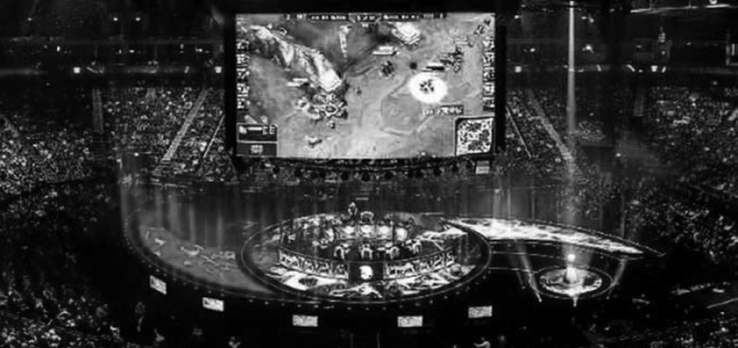
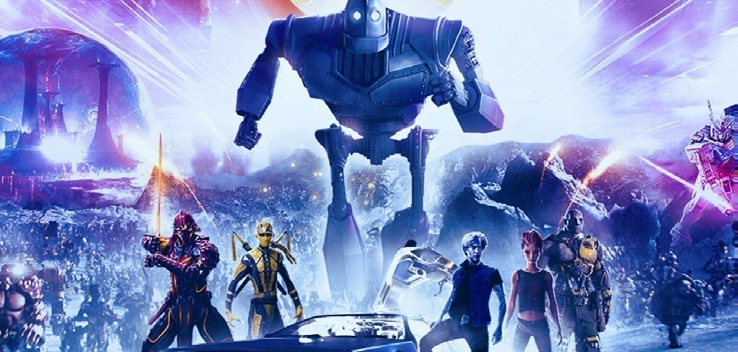 Source: BITKRAFT, Amiga Guru
Source: BITKRAFT, Amiga GuruACKNOWLEDGEMENTS
This essay represents a summary of amazing and thoughtful work done by dozens of
people in and around the gaming industry. We at MaC have to thank in particular
Matthew Ball, Jens Hilgers and his team at BITKRAFT, Jon Lai and Andrew
Green at A16Z, Dylan Glendinning at Everblue Management, Simon Davis at
Mighty Bear Games and the team at Play Ventures for providing inspiration for what went
into this report. We truly are standing on the shoulders of giants and we thank
them for their contributions
ABOUT MaC VENTURE CAPITAL
MaC Venture Capital is an early stage venture capital firm focused on finding
ideas, technology, and products that can become infectious. We invest in
technology companies that benefit from shifts in cultural trends and behaviors
in an increasingly diverse global marketplace.
MaC Venture Capital is the result of the merger between successful Los Angeles
and Bay Area based Seed funds, Cross Culture Ventures and M Ventures.





















